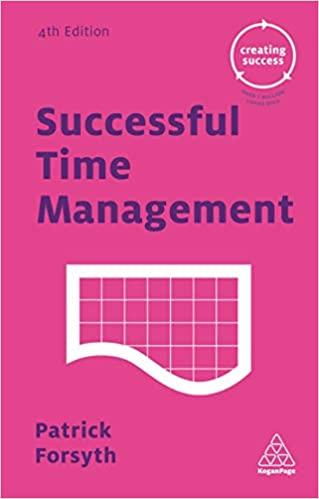Answered step by step
Verified Expert Solution
Question
1 Approved Answer
Kamauf Custom Glass, Inc., manufactures custom windows primarily for homes and churches. Small repair jobs may take a few hours, but larger jobs may take




Kamauf Custom Glass, Inc., manufactures custom windows primarily for homes and churches. Small repair jobs may take a few hours, but larger jobs may take hundreds of hours. How to schedule the jobs is a continuing issue. The scheduler has decided to see what insight can be gained by examining some common sequencing rules, namely FCFS, EDD, SPT, and LPT, on the criteria of average completion (flow) time, average lateness, and average number of jobs in the system. Her sample is the six jobs on the scheduler's desk Monday morning. Assume that all jobs on the scheduler's desk arrived today (day 1, which is a workday) in the order shown below. The estimated times to complete the jobs and their due dates are noted. a) Sequence the jobs according to the following decision rules: FCFS, EDD, SPT, and LPT. According to the FCFS rule, the sequence of jobs should be According to the EDD rule, the sequence of jobs should be According to the SPT rule, the sequence of jobs should be According to the LPT rule, the sequence of jobs should be take : The schec erage name it all numb d times jobs c to col a) Se According to the FCFS rule, the sequence of jobs should be According to the EDD rule, the sequence of jobs should be According to the SPT rule, the sequence of jobs should be According to the LPT rule, the sequence of jobs should be b), c), d) \& e) Compute the average completion (flow) time, average lateness, and average number of jobs in the system for each rule. Construct the table of measures of effectiveness for each rule (round your responses to two decimal places). f) Which is the best decision rule based on average completion (flow) time? The best decision rule based on average completion (flow) time is g) Which is the best decision rule based on average lateness? The best decision rule based on average lateness is b), c), d) \& e) Compute the average completion (flow) time, average lateness, and average number of jobs in the system for each rule. Construct t f) Which is the best decision rule based on average completion (tlo The best decision rule based on average completion (flow) time is g) Which is the best decision rule based on average lateness? The best decision rule based on average lateness is
Step by Step Solution
There are 3 Steps involved in it
Step: 1

Get Instant Access to Expert-Tailored Solutions
See step-by-step solutions with expert insights and AI powered tools for academic success
Step: 2

Step: 3

Ace Your Homework with AI
Get the answers you need in no time with our AI-driven, step-by-step assistance
Get Started


